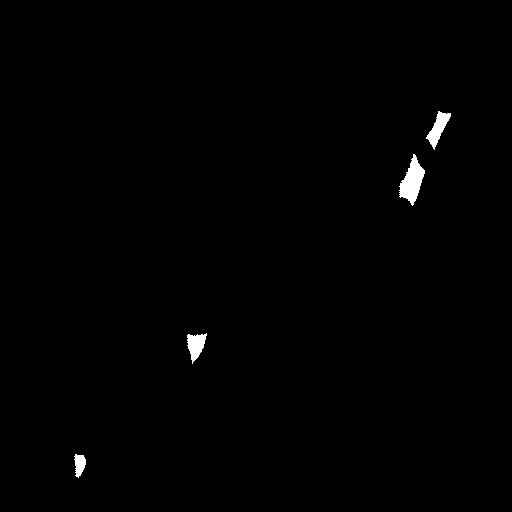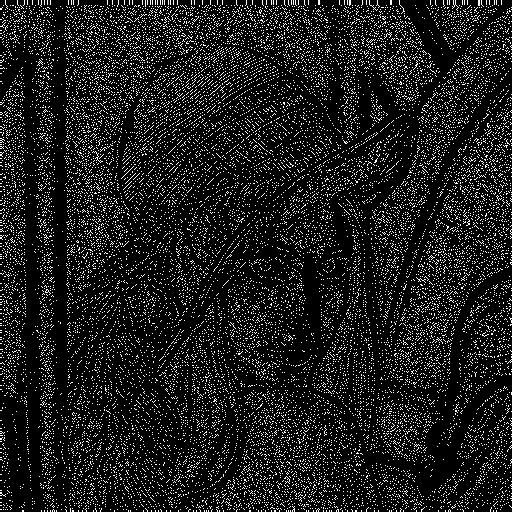Perform a geodesic reconstruction dilation.
Compute the reconstruction by dilation of marker with respect to the mask image using se as structuring element. Soille p.160. The algorithm used is the one defined as hybrid in Vincent(1993), Morphological grayscale reconstruction in image analysis: applications and efficient algorithms, itip, 2(2), 176--201.
- Precondition:
- Mask must be greater or equal than marker.
- Parameters:
-
I1 Exact type of image marker. I2 Exact type of image mask. N Exact type of neighborhood.
- marker Image to work on.
- mask Image used for geodesic dilation.
- Ng Neighborhood to use.
#include <oln/basics2d.hh> #include <oln/morpho/opening.hh> #include <oln/morpho/reconstruction.hh> #include <oln/level/compare.hh> #include <ntg/all.hh> int main() { typedef oln::image2d<ntg::int_u8> im_type; im_type im1(oln::load(IMG_IN "lena128.pgm")); im_type im2 = oln::morpho::opening(im1, oln::win_c4p()); oln::save(oln::morpho::hybrid::geodesic_reconstruction_dilation(im2, im1, oln::neighb_c4()), IMG_OUT "oln_morpho_hybrid_geodesic_reconstruction_dilation.pbm"); return 0; }


Definition at line 284 of file reconstruction.hh.
References oln::abstract::image< Exact >::clone(), oln::abstract::neighborhood< Exact >::delta(), oln::morpho::get_minus_se_p(), oln::morpho::get_plus_se_p(), and oln::abstract::image< Exact >::size().
00287 {
00288 mlc::eq<I1::dim, I2::dim>::ensure();
00289 mlc::eq<I1::dim, N::dim>::ensure();
00290
00291 precondition(marker.size() == mask.size());
00292 precondition(level::is_greater_or_equal(mask, marker));
00293
00294 oln_concrete_type(I1) output = marker.clone();
00295 output.border_adapt_copy(Ng.delta());
00296 {
00297 typedef typename abstract::neighborhood<N>::win_type E;
00298 E Ng_plus = get_plus_se_p(convert::ng_to_cse(Ng));
00299 E Ng_minus = get_minus_se_p(convert::ng_to_cse(Ng));
00300 typename I1::fwd_iter_type fwd_p(output);
00301 typename I1::bkd_iter_type bkd_p(output);
00302 for_all (fwd_p)
00303 output[fwd_p] = ntg::min(morpho::max(output, fwd_p, Ng_plus),
00304 mask[fwd_p]);
00305
00306 std::queue<oln_point_type(I1) > fifo;
00307 for_all (bkd_p)
00308 {
00309 output[bkd_p] = ntg::min(morpho::max(output, bkd_p, Ng_minus),
00310 mask[bkd_p]);
00311 if (internal::exist_init_dilation(bkd_p.cur(), output, mask, Ng_minus))
00312 fifo.push(bkd_p);
00313 }
00314 // Propagation Step
00315 while (!fifo.empty())
00316 {
00317 oln_point_type(I1) p = fifo.front();
00318 fifo.pop();
00319 oln_neighb_type(N) q(Ng, p);
00320 for_all (q) if (output.hold(q))
00321 {
00322 if ((output[q] < output[p]) && (mask[q] != output[q]))
00323 {
00324 output[q] = ntg::min(output[p], mask[q]);
00325 fifo.push(q);
00326 }
00327 }
00328 }
00329 }
00330 return output;
00331 }





 1.3.6-20040222
1.3.6-20040222